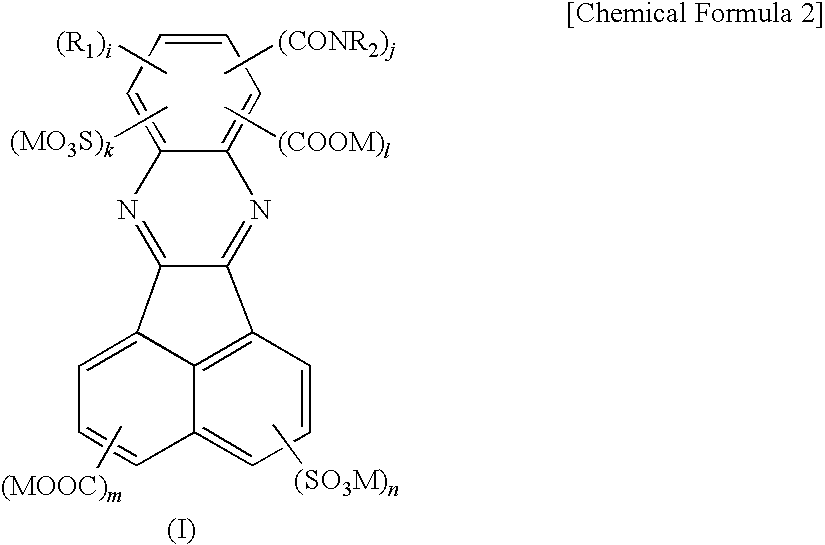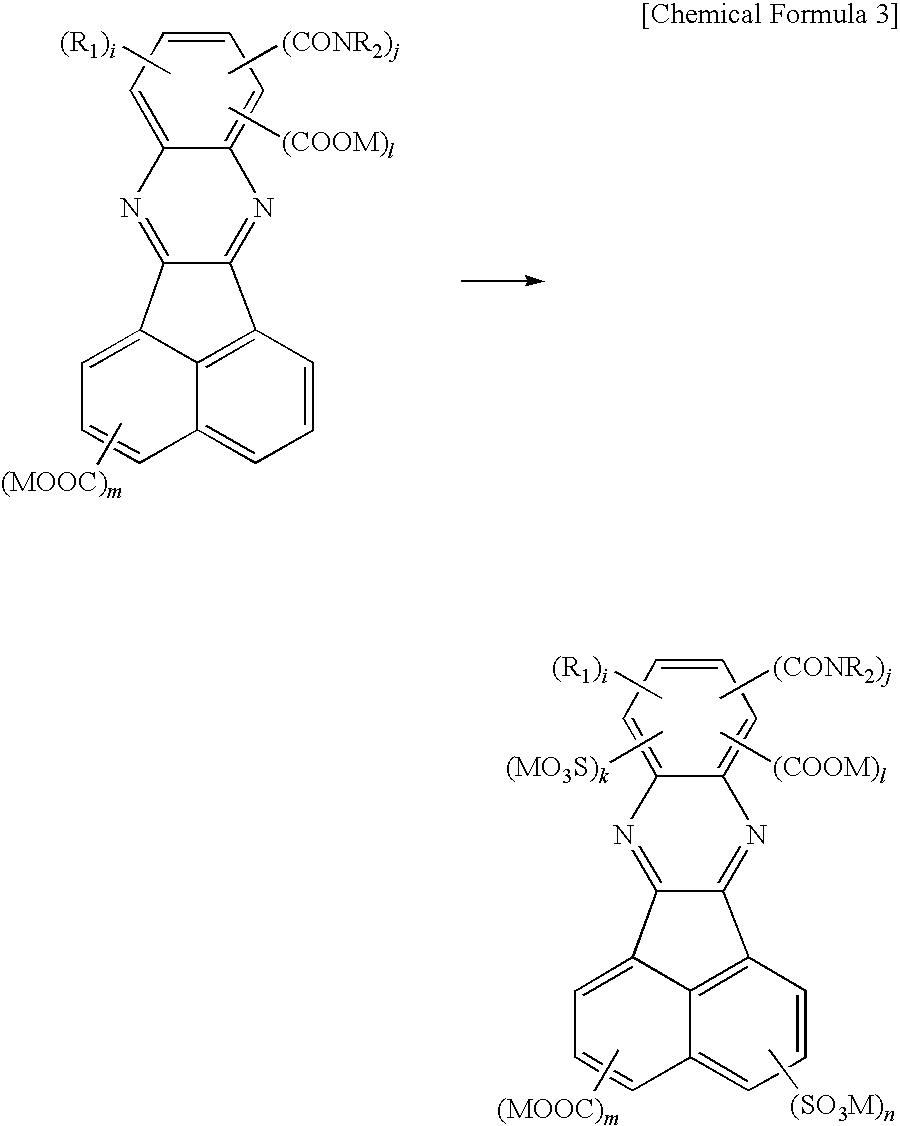Birefringent film and method of producing the same
a technology of birefringent film and film, which is applied in the direction of polarising elements, instruments, chemistry apparatus and processes, etc., can solve the problems of difficult to reduce the thickness of the liquid crystal display, the thickness of conventional birefringent film is likely to increase, and the screen becomes dark or indistinct, etc., to achieve the desired retardation value, the effect of high in-plane birefringent index and sharp reduction of thickness
- Summary
- Abstract
- Description
- Claims
- Application Information
AI Technical Summary
Benefits of technology
Problems solved by technology
Method used
Image
Examples
synthesis example 1
Synthesis of acenaphtho[1,2-b]quinoxaline-9-carboxylic acid
[0083]500 ml of dimethylformamide was added to a mixture of 10 g of purified acenaphthene quinoline and 8.4 g of purified 3,4-diaminobenzoic acid. The reactant was continued to stir at room temperature for 21 hours. The precipitate was filtered to thereby obtain a crude product. The crude product was dissolved in a heated dimethylformamide, and filtered again. Then, the resultant was washed with dimethylformamide and water for purification.
synthesis example 2
Synthesis of mixture of ammonium 2-sulfo-acenaphtho[1,2-b]quinoxaline-9-carboxylate and ammonium 5-sulfo-acenaphtho[1,2-b]quinoxaline-9-carboxylate
[0084]As shown in the reaction path described later, 3 g of acenaphtho[1,2-b]quinoxaline-9-carboxylic acid obtained in Synthesis Example 1 was added to 30% fuming sulfuric acid (15 ml). The reactant was stirred at 70° C. for 17.5 hours. The obtained solution was diluted at a temperature of 40° C. to 50° C. with 33 ml of water, and further stirred for 12 hours. The precipitate was filtered to thereby obtain a mixture containing 5-sulfo-acenaphtho[1,2-b]quinoxaline-9-carboxylic acid and 2-sulfo-acenaphtho[1,2-b]quinoxaline-9-carboxylic acid.
[0085]The mixture was dissolved in 2 L of pure water (electrical conductivity: 1.7 μS / cm), and further ammonium hydroxide was added thereto to neutralize acid. The obtained aqueous solution was put in a supply tank, and purified using a triple flat membrane evaluation device equipped with a reverse osmos...
synthesis example 3
Synthesis of mixture of ammonium
2-sulfo-acenaphtho[1,2-b]quinoxaline-9-carboxylate, ammonium 3-sulfo-acenaphtho[1,2-b]quinoxaline-9-carboxylate, ammonium 4-sulfo-acenaphtho[1,2-b]quinoxaline-9-carboxylate, and ammonium 5-sulfo-acenaphtho[1,2-b]quinoxaline-9-carboxylate
[0086]As shown in the reaction path described later, 50 g of acenaphthenequinone was added to 20% fuming sulfuric acid (150 ml), and stirred at 25° C. for 12 hours. The obtained solution was diluted at 40° C. with 140 ml of water, and further stirred for 12 hours. The precipitate was filtered and a cake collected on a filter paper was suspended in 300 ml of acetic acid. The precipitate was filtered again, and then dissolved in 200 ml of acetone. The obtained solution was diluted with 700 ml of dichloromethane. The precipitate was filtered again, and air-dried without heating to thereby obtain 1,2-dioxoacenaphthylene-4-sulfonic acid and 1,2-dioxoacenaphthylene-5-sulfonic acid.
[0087]A suspension containing 1.5 g of 3,4-d...
PUM
 Login to View More
Login to View More Abstract
Description
Claims
Application Information
 Login to View More
Login to View More - R&D
- Intellectual Property
- Life Sciences
- Materials
- Tech Scout
- Unparalleled Data Quality
- Higher Quality Content
- 60% Fewer Hallucinations
Browse by: Latest US Patents, China's latest patents, Technical Efficacy Thesaurus, Application Domain, Technology Topic, Popular Technical Reports.
© 2025 PatSnap. All rights reserved.Legal|Privacy policy|Modern Slavery Act Transparency Statement|Sitemap|About US| Contact US: help@patsnap.com



